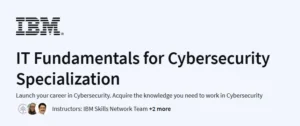What will you learn in Complete Guide to Redis Course
Understand Redis architecture: in-memory storage, data eviction, persistence, and replication
Master core data types and commands: strings, hashes, lists, sets, sorted sets, bitmaps, and hyperloglogs
Implement pub/sub messaging, transactions, and Lua scripting for advanced use cases
Configure Redis for high availability and scaling: clustering, sentinel, and sharding strategies
Optimize performance with memory management, eviction policies, and connection pooling
Program Overview
Module 1: Introduction to Redis & Setup
⏳ 1 hour
Topics: Redis use cases, installation, CLI vs. client libraries
Hands-on: Install Redis locally, connect via the CLI, and run basic health checks
Module 2: Strings & Hashes
⏳ 1 hour
Topics:
GET/SET, expirations,HGET/HSET, and hash field operationsHands-on: Build a simple user-profile store using hashes with TTL for session expiry
Module 3: Lists, Sets & Sorted Sets
⏳ 1.5 hours
Topics:
LPUSH/LRANGE,SADD/SMEMBERS,ZADD/ZRANGEfor leaderboardsHands-on: Implement a message queue with lists and a real-time leaderboard with sorted sets
Module 4: Advanced Data Structures
⏳ 1 hour
Topics: Bitmaps for analytics, HyperLogLog for cardinality, geospatial indexes
Hands-on: Track unique visitor counts with HyperLogLog and perform radius searches with geospatial data
Module 5: Pub/Sub & Streams
⏳ 1 hour
Topics: Publish/subscribe patterns, consumer groups, message acknowledgment
Hands-on: Create a chat prototype using Pub/Sub and process event streams with consumer groups
Module 6: Transactions & Lua Scripting
⏳ 1 hour
Topics:
MULTI/EXEC, optimistic locking withWATCH, embedding Lua scriptsHands-on: Build an atomic stock reservation system combining transactions and scripting
Module 7: Persistence & Eviction Policies
⏳ 1 hour
Topics: RDB snapshots, AOF logs,
maxmemorypolicies (volatile-lru,allkeys-random)Hands-on: Configure persistence options and benchmark eviction behavior under memory pressure
Module 8: High Availability & Clustering
⏳ 1.5 hours
Topics: Sentinel for failover, Redis Cluster slots and resharding, client redirection
Hands-on: Deploy a three-node Sentinel setup and a minimal Redis Cluster, then simulate a failover
Module 9: Performance Tuning & Monitoring
⏳ 1 hour
Topics: Connection pooling, pipelining,
INFOmetrics, Redis SlowlogHands-on: Profile common commands, enable pipelining for batch workloads, and monitor with
redis-cli
Get certificate
Job Outlook
Redis expertise is highly sought for roles like Backend Engineer, Site Reliability Engineer, and Data Engineer
Widely used in caching, real-time analytics, and messaging across tech, e-commerce, gaming, and finance industries
Salaries range from $100,000 to $160,000+ depending on experience and region
Mastery of Redis drives performance and scalability improvements in high-traffic applications
Specification: Complete Guide to Redis
|
FAQs
- Basic familiarity with programming concepts is helpful but not strictly required.
- The course introduces Redis fundamentals gradually, from installation to data operations.
- Understanding variables, loops, and data structures can help in grasping Redis concepts faster.
- Learners can practice hands-on exercises even if they are new to databases.
- By the end, learners can efficiently use Redis for caching, data storage, and real-time applications.
- Yes, the course covers caching concepts and strategies using Redis.
- Learners practice storing frequently accessed data to improve application speed.
- Techniques include setting expiry, cache invalidation, and memory management.
- Practical examples demonstrate real-world performance optimization.
- Advanced caching strategies may require additional experimentation and study.
- Yes, the course teaches various Redis data structures such as strings, lists, sets, hashes, and sorted sets.
- Learners practice performing operations and queries on each data type.
- Understanding these structures helps in building efficient and scalable applications.
- Hands-on exercises ensure learners can implement real-world solutions using Redis.
- More advanced data structures like streams or geospatial indexes may require additional learning.
- Yes, the course demonstrates Redis use cases in real-time applications like chat systems and live dashboards.
- Learners practice Pub/Sub messaging, data expiration, and fast data retrieval.
- Integration with programming languages (like Python, Node.js) is included for real-world implementation.
- Skills help build responsive and high-performance applications.
- Advanced real-time scenarios may require deeper study and experimentation.
- Yes, the course covers essential Redis concepts needed for backend development, caching, and real-time applications.
- Hands-on exercises provide practical skills for implementing Redis in projects.
- Learners understand installation, configuration, data operations, and performance optimization.
- Knowledge gained is applicable for roles like backend developer, DevOps engineer, and software engineer.
- Advanced enterprise-level usage may require further practice and exploration.





